 By Jane McEllroy
By Jane McEllroy
 By Jane McEllroy
By Jane McEllroy
MEASURE
How would you measure the Earth? This special place, this rare jewel, How would you measure its worth?
How can we be so cruel? This land we’ve filled with waste, Where Mankind and Nature duel.
We take all we can with haste, From this imagined abundance. In this cycle we’re trapped, encased.
We gain, but at what expense. Our riches depleted, no more. We drain the world on the pretense,
That the Earth has so much in store. When in fact what we have is limited, And we’ve shaken it down to its core.
Alarming, the damage we’ve inflicted. And yet, we’ve only begun. How do we return what we’ve abstracted?
How do we undo what’s been done?
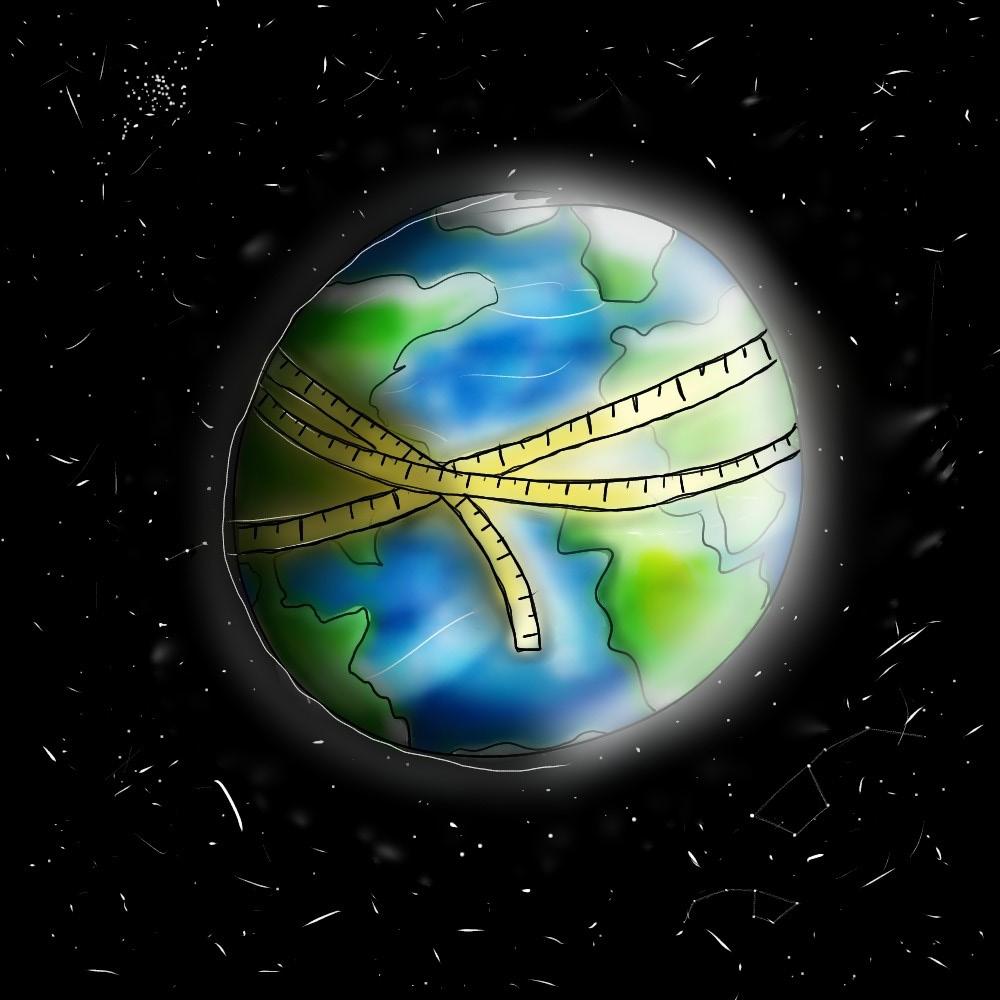
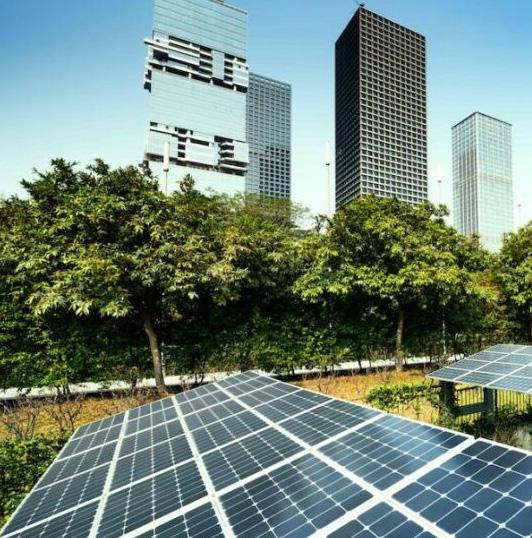
Homes & Energy
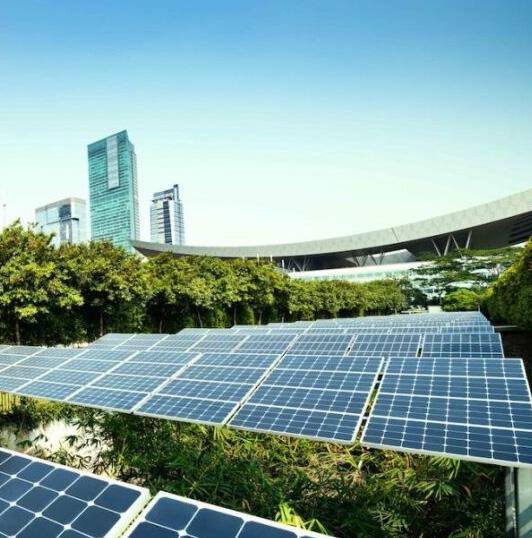
THIS IS OF THE WORLD! THE END
The Earth has been damaged to an almost unfixable point and the leading factor that caused this change is Humanity. If we want people and Earth to survive, then people need to change their currently established ways.
By Gavin VinoverskiPollution’s Damage
Humanity has been slowly leading to the Earth’s decline in many ways, such as pollution of bodies of water, airways, and land masses. According to Buy Water Online, a company that sells clean water as it gets increasingly harder to find, Humanity adds 1.2 trillion gallons (about 4.5 billion kiloliters) of polluted water to water supplies each year. Eventually, people will not have enough water to fuel themselves. Humanity also damages Earth’s air supply in many ways. A leading cause of air pollution is human industrialization. Through industrialization, more and more factories have been built, all of which damage the Earth’s air supply. As the environment is destroyed for its resources, humans lose the means to fix this issue.
People are even being affected and killed by their own actions against Earth’s air supply. As stated in Our World in Data, “Outdoor air pollution is a risk factor for several of the world’s leading causes of death, including stroke, heart disease, lung cancer, and respiratory diseases, such
as asthma.” Earth’s air supply is not the only way that the planet is being polluted. Humanity also damages Earth’s land through pollution. GreenCoast discovered that as much as 75% of Earth’s land is polluted or has been affected by pollution. People are even damaging themselves through this process. Looking back at the GreenCoast website, 3.2 billion people have been affected in some way by land pollution.
Global Warming
People commonly emit CO2, or Carbon dioxide, which increases the temperature of the Earth to dangerous, possibly deadly levels. Another major source of CO2 comes from fossil fuels. CO2 has been on the rise for many years and is now reaching points of 416 ppm, which means there are 416 parts of CO2 for every million parts in the atmosphere. These levels are dangerously higher than they should be. Climate Portal, which is a website created to provide information about climate change to the public, states, “Atmospheric CO2 levels of between 280 and 350 parts per million created the climate that let humanity build and feed the modern world. The farther we get
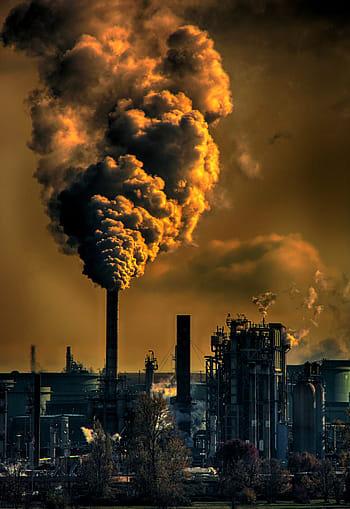
from those levels, the more we run the risk of disturbing that balance.” The state the Earth is in, due to current ppm levels, is becoming dangerous for the Earth and Humanity.
The Need to Change
Since the industrial revolution, Earth has been dying faster and faster. Pollution has been invading Earth’s airways, oceans, and land, causing disease and damage to Humanity and Earth itself. A large portion of the Earth’s damage is done by Humanity and is leading to a cataclysmic event that will not only damage the Earth irreparably but also wipe out the human race. If anyone wants a change in the world, then they need to act now; otherwise, it will be too late.
“Atmospheric CO2 levels of between 280 and 350 parts per million created the climate that let Humanity build and feed the modern world.”
SUSTAINABILITY CROSSWORD

Down:
1: Designing or building
3: Relating to the sun
5: Housing that incorporates smart devices
7: Harmful substances in the environment
10: Plants that are adapted to local conditions
12: Materials that can be renewed
Across: 2: Heat inside the Earth 4: An ecological balance
6: Remains of oganisms
8: A Light Emmitting Diode
9: A common greenhouse gas
11: Sprays used to remove pests and weeds
13: A process where used material is broken down and remade.
14: A machine that uses wind to gather energy
15: A large body of water
RENEWABLE ENERGY: BENEFITS FOR YOUR HOME
Energy as we know it is coming to an end. The system of fossil fuels will not last for long, which is where renewable energy comes in. Renewable energy is on the rise with prices lowering every year. Anyone can switch to clean energy.
By Felix SunWhen making the switch to renewable energy for a home, there are many options to choose from. These sources differ in practicality, but all pay off over time. The main sources are geothermal heating, solar power, wind energy and hybrid. In geothermal heating, water is brought underground to obtain the Earth’s heat. Cold water can be turned warm, and warm water can be turned cold. Homes can be heated for no monthly bill at all. (The geothermal page will go more into detail.) Solar has two distinct parts: water heating and energy. In water heating, sunlight heats up usable hot water. However, geothermal is used more often for water heating because it is more consistent. According to an expert from Forbes Magazine, “The cost of solar panels ranges
anywhere from $8,500 to $30,500, with the average 6kW solar system falling around $12,700.” In addition to this, solar panels are eligible for the Investment Tax Credit (ITC), which can save 30% on average for solar systems. Excess energy can also be sold back to utility providers to profit from the money spent.
Drawbacks
Wind energy is not built for homes, but a wind energy system can provide some or all of a home’s electricity. However, different locations have different weather conditions, which can make it difficult to generate the needed energy. According to ENERGY.gov, there should be at least one acre of free land and an annual average wind speed of 10 miles per hour. These constraints make relying on wind energy difficult, to where a smaller wind turbine project could cost between $15,000 and $75,000. Because these
“A hybrid generation plant can, therefore, use, for example, photovoltaic energy when the sun shines and another source, such as wind, in cloudy weather, thus ensuring a more stable and efficient supply.”
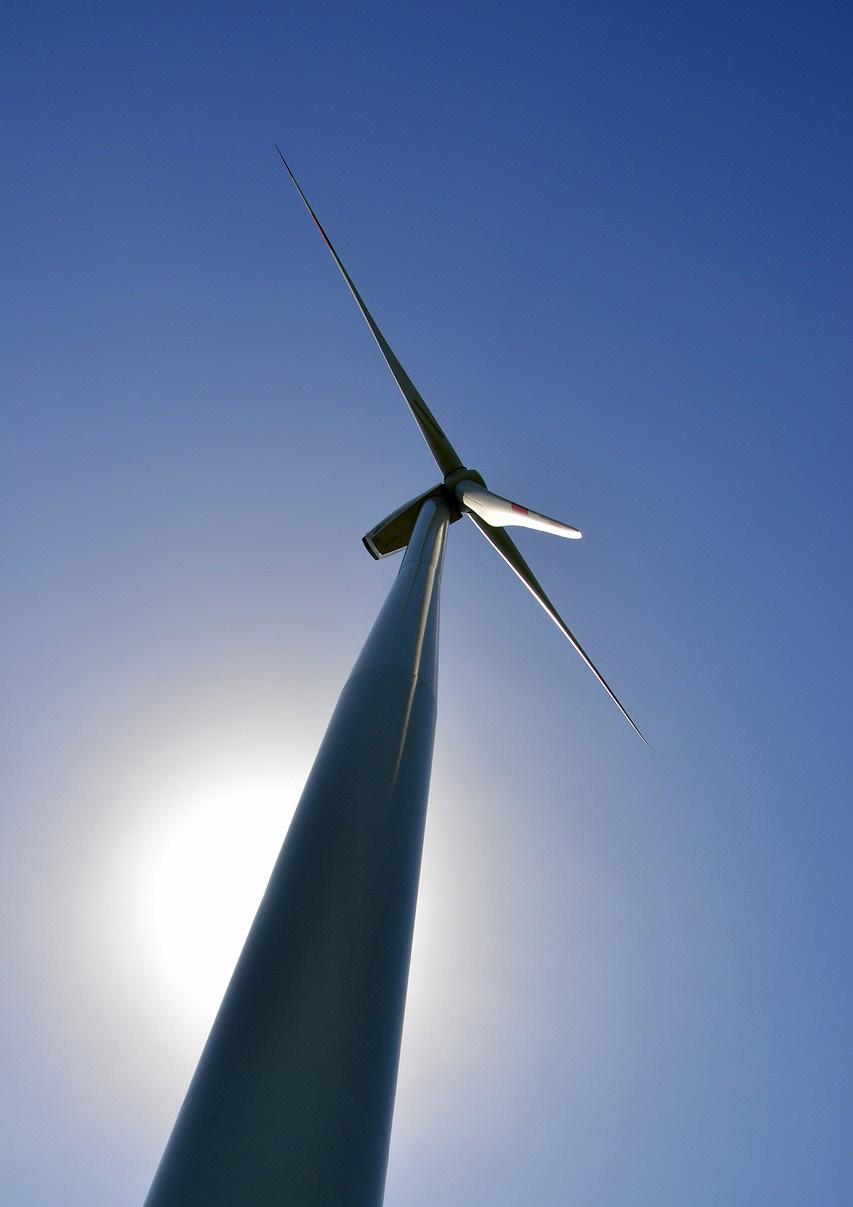
wind requirements are strict and solar being unreliable, homeowners sometimes mix solar and wind energy together to make a hybrid. Iberdrola, a renewable energy company, states that “A hybrid generation plant can, therefore, use, for example, photovoltaic energy when the sun shines and another source, such as wind, in cloudy weather, thus ensuring a more stable and efficient supply.” The cost is just a mix of solar and wind, where both models can be scaled down for cheaper prices.
Dropping Prices
While fossil fuels and non-renewable energy prices have heavily fluctuated, renewable energy prices have only gone down, becoming cheaper every year. As stated by Bill Nussey at Freeing Energy, prices of solar energy have declined at an astronomical rate, being about 400 times smaller than in 1977. Wind energy also follows a similar pattern.
Overall, geothermal heating, solar power, wind energy and hybrid are the leading energy sources for any home. While prices for non-renewable sources have increased, renewable energy prices have been going down by the year. Now is a great time to switch to clean energy.
Public domain image retrieved from PixabayGEOTHERMAL ENERGY
Geothermal Heating is the best method of sustainable heating and cooling compared to the traditional methods of heating like central furnaces.By Jordan Gregory
Geothermal Heating is a type of heating that comes from the ground beneath the house it is being installed in. This source of energy is great because it’s always available, quiet, and does not require much maintenance because the heat comes straight from the Earth.
Geothermal Energy’s role in sustainability is using the Earth’s heat to heat and cool a home, rather than using up fossil fuels or using large amounts of other fuel or energy to be later turned into heating. According to Energy.gov, “Like a cave, this ground temperature is warmer than the air above it during the winter and cooler than the air in the summer.” This gives some perspective on how it may feel with this system of cooling. This also shows why Geothermal heating works the way it does and why it doesn’t just feel warm or cold all the time.
How it Works
There are two types of Geothermal heat pumps, horizontal and vertical pumps. It depends on the location of the home, but one of these systems would be supplied to the home. Vertical would go
deeper in the ground and would be used if the space around the house isn’t that big. Geothermal Heating would replace the current heating system in homes, but it isn’t as simple as that. It will require land to be dug into to put the heat pumps in the ground, changing the landscape around the home while the pumps are being put in. Geothermal Heating’s two cons are landscape change and the upfront cost. Geothermal Heating provides a lot more benefits than cons, especially the price balance. The price for the installation balances out over time
because of the offset of the low maintenance over the span of the time it will be owned, and it is cheaper overall.
The fact that people don’t have to pay as much for maintenance or heating and cooling is a big reason why they get this sustainable system of heating and pay for the upfront costs.
The Benefits
“Like a cave, this ground temperature is warmer than the air above it during the winter and cooler than the air in the summer.”
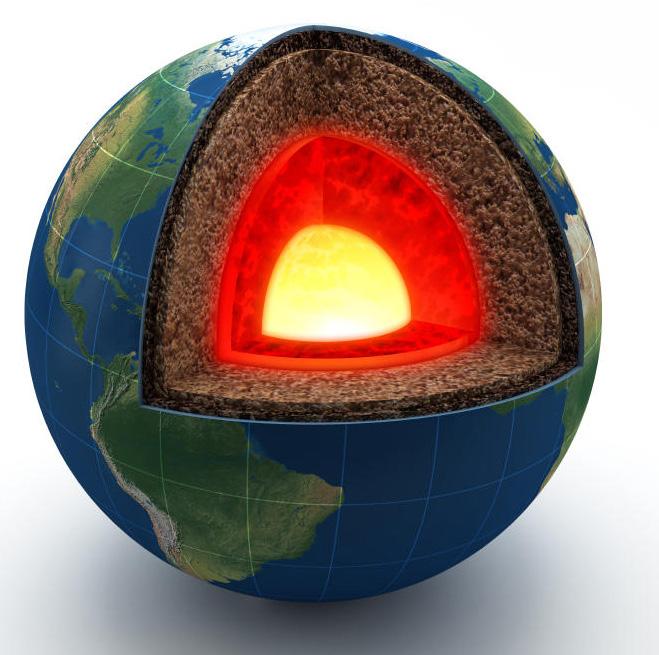
Geothermal heating provides a big tax incentive right now. According to Energy Star, we are at the height of the tax incentives because if people were to install Geothermal heating between now and before January 1, 2033, 30% would be given out to the people who have the heat pumps in their home.
Geothermal heating can also give many other benefits like providing 2-in-1 heating and cooling, which is convenient because of the low maintenance, and a few other benefits that people can enjoy. This switch to a Geothermal heat pump will help not only the people but also the environment.
WHAT CHANGES CAN MAKE ARCHITECTURE SUSTAINABLE?
Construction materials and the construction process for housing are unsustainable globally and are a leading factor in greenhouse emissions. Greenhouse emissions from construction can easily be changed, whether it is window placement or aesthetically pleasing reclaimed wood.By Parker Bucci
Housing materials use too many fossil fuels while being produced. According to India Block’s Dezeen magazine article on the Emergency Climate Summit, “The four billion tonnes of cement produced each year for concrete construction accounts for eight percent of the total global carbon dioxide emissions.” That is a large contribution to global warming and needs to be changed. In an article in the World Economic Forum by Marcus Fairs, the founder of Dezeen, he states that, “overall construction globally emits 38% of all global emissions, which is 14 trillion kilograms of greenhouse gases every year.” There is a lot that can be done to make those numbers plummet.
There are substitutes that can be used instead of those high fossil fuel usage materials. Some of those may include reclaimed wood or timber, which are much better substitutes that remain appealing to the eye. Timber is widely considered the only sustainable material because it is natural and carbon dioxide trapping, so it cannot be released back into the atmosphere. Materials like recycled steel and flexible concrete may still use some fossil fuels to build a house, but their creation is a lot more sustainable in comparison to their less sustainable counterparts. A blog by Ellis Grace, the editor-in-chief of Autodesk Construction Cloud says that 40-50% of raw materials in the world are used for producing those unsustainable parts and products and up to 500 times more resistant to cracking and can

absorb more shock. This is making it better to use for houses and general architecture.
“Timber is widely considered the only sustainable material because it is natural and carbon dioxide trapping, so it cannot be released back into the atmosphere. ”
Natural light or LEDs are a lot more sustainable electricity-wise and, in the long run, would end up reducing cost and fossil fuel emissions if implemented. Houses could also use better systems for cooling such as a cooling roof. A cooling roof uses a light reflective color or the placement of the window, so they get sunlight. The typical house is built unsustainably in terms of size and shape, so more compact cube houses are better for heat and cooling transfer as that temperature can remain insulated, unlike the typical modern home. The article, “21 Sustainable House Ideas,” by Jorge Fontan who has three degrees in architecture states that another method of sustainable heating and cooling would be geothermal, which is widely considered the most sustainable method of heating and cooling. Heating and cooling may also be recycled in a house where it can go from one room to another.
Overall, what people can do to cut these emissions is use those more sustainable materials such as reclaimed wood and flexible concrete. Because these materials are more sustainable, they help cut down emissions significantly.
A FUTURISTIC WAY OF LIVING
The future of living is now. In today’s fast-paced world, technology plays a significant role in humanity’s livelihood, where smart homes are at the forefront of a technological revolution. Joining the growing revolution is in the best interests to prepare for the future.
By Joah BeckA smart home operates like a regular home but with a high-tech twist. It’s filled with gadgets and devices that can perform all sorts of useful and helpful tasks, such as turning on lights or adjusting the thermostat, just by using a phone or issuing voice commands. According to Jennifer Pattison Tuohy, who has been working with smart devices for 11 years, “The simplest way to explain the concept of a smart home is that it’s a natural evolution of our homes. A smart home isn’t fundamentally different from a ‘regular’ home — it’s just the improvement of one.”
that can control a smart home by responding to voice commands. Voice assistants, like Amazon’s Alexa and Google Assistant, serve as the brains behind smart homes. They can control all smart devices, from lights to TVs, and assist with internet searches. Smart homes
conservation if connected to renewable energy sources like solar or wind. By consuming less energy, homes rely less on fossil fuel power, which benefits the planet by reducing the release of toxins into the atmosphere.
“Moreover, smart homes aren’t solely about convenience; they also benefit the environment.”
One of the most useful features of smart homes is voice assistants. According to Home Stratosphere, an online news source, “It’s the physical centerpiece of any smart entertainment setup, the key component to tying the whole thing together. In addition to controlling what’s on the screen or playing from the speakers, it can interface with smart lights, thermostats, and other home essentials to give you control of your entire house.” These devices are personal helpers
are equipped with various gadgets and devices that streamline life. From smart thermostats that adapt to habits to security cameras that enhance home safety, there’s a device for every need. Moreover, smart homes aren’t solely about convenience; they also benefit the environment. Smart thermostats can conserve energy and reduce utility bills by optimizing energy usage based on habits, resulting in substantial financial savings.
The future of smart homes looks promising. Furthermore, smart devices can contribute to energy
Smart Homes are the future of living. While setting up a smart home may seem daunting initially, it’s straightforward. All that’s needed is to select the desired devices and connect them to the Wi-Fi. A smart thermostat, for instance, costs around $150 and could likely recoup that investment within two years of use. Most devices come with user-friendly instructions, making the setup process quick and easy. Smart homes are revolutionizing the way people live, offering innovative devices, energy-saving features, and boundless possibilities. So why wait? Create a smart home today; it benefits both you and the environment.

THE HISTORY OF SUSTAINABILITY
By Kaiden McCalisterThe history of sustainability dates to early human civilizations, where society would flourish. According to The Journal of Agriculture and Environmental Ethics research paper, “The Evolution of Sustainability,” the word “sustainability” was first used in the context of discussing man’s future on this planet in 1972.
The word appeared in the book Blueprint for Survival (originally published by the Ecologist). According to the Journal of Agriculture and Environmental Ethics research paper “The Evolution of Sustainability,” “Six separate but related strains of thought have emerged prominently since 1950 in discussions of such phenomena as the interrelationships among rates of population growth, resource use, and pressure on the environment. They are the ecological/ carrying capacity root, the resources/environment root, the biosphere root, the critique of technology root, the “no growth”/ “slow growth” root,

and the ecodevelopment root.” Each of these strains of thought was fully developed before the word “sustainable” itself was used.
Though the history has dated back to early human life and has grown and changed throughout the years, the goal has stayed the same: To transform the world in an image that can build off of itself without consequence.
“The word ‘sustainability’ was first used in the context of discussing man’s future on this planet in 1972.”
EVERYDAY SUSTAINABILITY: WHAT CAN YOU DO?
Many sustainable solutions are not always easy to integrate into daily life, but there are everyday tasks that can be made more sustainable that are not complete lifestyle changers.
By Isaiah HunterSimple household objects can be turned into more sustainable options. Objects like lightbulbs are not very sustainable due to being only about 5% efficient in producing light. This is because standard lightbulbs produce light by heating a small piece of metal, which causes a lot to be wasted instead of turned into light. The newest type of lightbulb, the LED (Light Emitting Diode) bulb, is the most efficient out of all. In a 2020 report by the United States Department of Energy, Office of Energy Efficiency and Renewable Energy, LED bulbs’ energy efficiency was about 30%.
How much can a switch of all the lightbulbs in a house with LED bulbs really save energy? According to the same report, “If all 3.5 billion installations were to switch to LED lamps... the switch would save 50.9 TWh of site electricity, or about 487 tBtu (1 billion British Thermal Units) of source energy.” For reference, 1 TWh (Terawatt Hour) is 1 trillion watts, whereas an LED uses about 10 watts at maximum brightness. LED bulbs also last significantly longer than a standard lightbulb or incandescent bulb, lasting about 10 years comparatively. LED bulbs save energy on electricity because they do not need to heat up a filament to produce light. Saving energy means saving cost, so it is safe to say that LED bulbs are clearly the better option and will be for many years to come.
It is no wonder that recycling has been growing more popular over the years, as it can be a very sustainable option that anyone can do. According to the most recent
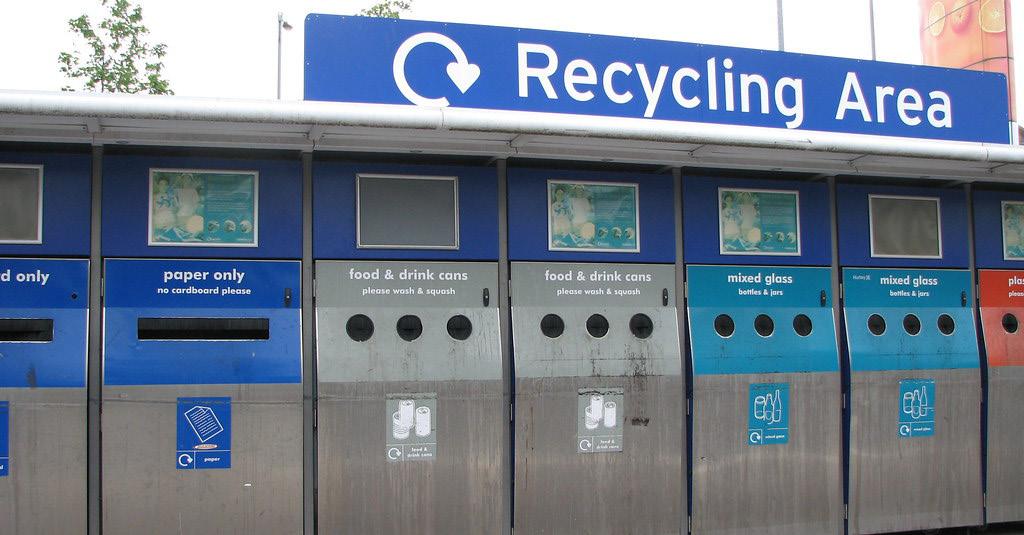
Environmental Protection Agency (EPA) data, an office dedicated to ensuring the protection of natural environments, over 212 million tons of carbon dioxide were saved by recycling or federal composting. Astoundingly, the benefits of recycling directly impact CO2 in the atmosphere and save energy. For example, it takes energy to create a typical plastic bottle, and by recycling old bottles, it saves energy by not having to make and produce the plastic needed. The EPA developed an energy savings model called iWARM (individual waste reduction model) to show the effects of recycling. “Recycling conserves energy. For example, recycling just 10 plastic bottles saves enough energy to power a laptop for more than 25 hours.”
Common household recycling materials include paper/ cardboard, glass, metals, and plastics. Composting, another form of recycling, which reduces the unused biomatter from uneaten parts of foods, creates nutrient-rich soil great for any garden or flower bed. Composting is quite easy, and only requires a bin. Common compostable foods can be banana peels, apple cores, lesser amounts of citrus, vegetables, coffee grounds and even eggshells. Recycling and composting can be great ways to help the environment without having to spend lots of extra money, which also means a lighter trash bag when taking the trash out.
Many sustainable practices require continuous dedication, but reasonable modifications like switching the lightbulbs to recycling and composting can save energy and help reduce electricity usage. Small steps at a time are all that is needed to help save the planet.
“Recycling conserves energy. For example, recycling just 10 plastic bottles saves enough energy to power a laptop for more than 25 hours.”
NATURAL HABITATS
Habitat loss is one of the leading causes of species decline. Humans are ruining their habitats to make room for themselves. To reduce the environmental impact, people should be more cautious about what they are putting in the environment.By Kaiden McCalister
Habitats with chemical pesticides and fertilizers have a negative impact on the environment and they can be harmful to both humans, and animals living in those environments. If there are chemically designed and lab grown pesticides and fertilizers that are being put in the ground, it is negatively affecting the natural balance and cycle of the environment. According to the National Institute of Health, pesticides can contaminate soil, water, turf, and other vegetation. In addition to killing insects or weeds, pesticides can be toxic to a host of other organisms including birds, fish, beneficial insects, and non-target plants.
As a community, we need to understand what we’re doing and should come together and create change. It is not something that is going to change overnight. Once people understand the problems and that what we as humans are doing is hurting the environment, we can move forward to make it better. According to surveys by the U.S. Environmental Protection Agency (EPA), more than three quarters of U.S. households use pesticides, with 66% treating major living areas in the home one or more times per year.
There are many things that must happen to reverse the effects humans have had on the environment; some are more impactful than others. One thing we can do, according to the New York State Department of Health is provide a better alternative for chemical pesticides, “… using non-chemical management methods on
lawns and gardens, such as introducing beneficial insects and wild, native plants, or use physical methods, including hand weeding, mulching, or setting traps, to reduce chemical use outdoors.” Another thing we could do in rural home gardens is incorporate permacultural industrial agriculture. It should be considered fundamental in helping create a better environment as long as they are grown the right way without harmful pesticides and fertilizers.
A new study finds that fruits and vegetables grown in urban farms still have a carbon footprint, so just growing things in gardens isn’t going to help much when we’re still putting chemicals in the ground that are doing more harm than good.
People need to understand what our practices have done to the ground and how to try reverse. It’s not going to be easy, and it’s going to take much more than just one person to do it. We need to come together as a community of people and strive to make a difference to save the ecosystem and environment.
“As a community, we need to understand what we’re doing and should come together and create change.”
GLOSSARY OF TERMS
By Jordan GregoryGeothermal:
: Heat that comes from the Earth
Renewable:
Sustainability:
Smart Home:
A source of energy that isn’t depleted by use
The ability to be maintained at a certain level or rate
A home containing lighting, heating, and electronic devices that can be controlled remotely by a phone or computer
Natural Habitat:
Pollution:
Sustainable Architecture:
An ecological or environmental area where specific species live
The presence in or introduction of a harmful substace or thing to the environment
Architecture that seeks to minimize the negative environmental impact it has through improved efficiency
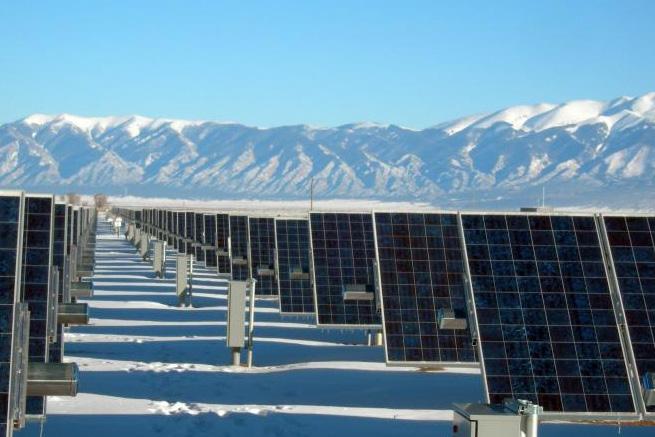
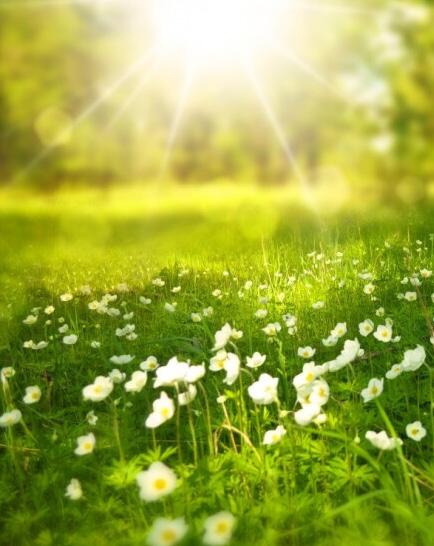
Yards & Gardens
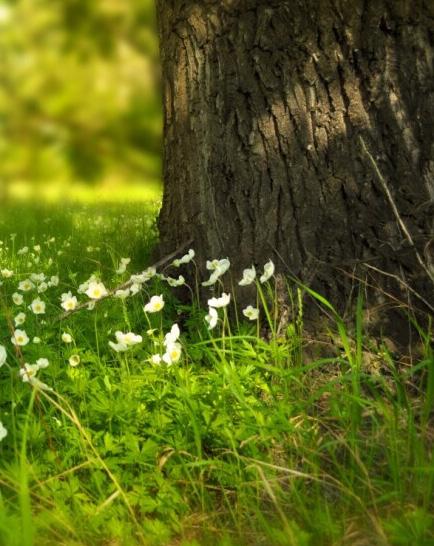 Public domain image retrieved from Pixabay
Public domain image retrieved from Pixabay
CHANGING THE WORLD WITH SUSTAINABLE LAWNS
By Maya HolbrookEven taking small actions makes a huge difference because gardens and lawns play a crucial role in benefiting the environment. There are many ways to make the space we live in more beautiful while protecting the planet we call home.
Lawns weren’t always such a point of pride for many homeowners. People started becoming interested in this idea around the 1950s as new suburban developments started being built. However, there are several issues with lawn maintenance. These issues include the lack of biodiversity, the amount of water wasted in lawn or garden maintenance, and the destruction of habitats. There are many ways to combat this.
The first way is to create a rain garden. According to the University of Maryland, which is focused on implementing sustainable solutions, rain gardens “help excess water slow down, soak in, and reduce erosion.” A rain garden is created by digging a small hole in the ground and planting wetland species.
Wetland species have deep roots to filter out pollutants from the
water after a large storm.
On the other hand, someone could plant species suited for droughts to conserve water, which is known as xeriscaping [zeer-i-skey-ping]. As stated by the University of Florida, “xeriscaping is landscaping with slow-growing, drought-tolerant plants to conserve water and establish a waste-efficient landscape.” This university is working towards reducing water consumption in such a hot environment. The practice of xeriscaping saves time, money, energy, reduces pollutants that enter waterways, and conserves biodiversity.
beautiful. Rain gardens have tall, colorful flowers, while xeriscapes have tough, hardy plants like succulents or cacti. Vegetable gardens provide fresh, delicious food for the owner’s table, and pollinator gardens attract amazing wildlife such as bees, butterflies, and birds. It is possible to replicate these techniques on a small scale in an urban area.
“Through hard work and dedication, anyone can help!”
Xeriscaping and rain gardens aren’t the only options available for a yard.
Pollinator gardens or vegetable gardens are a great alternative to the traditional lawn. Although many people find a well-maintained lawn pleasing to the eye, a wild space full of varied species can be uniquely
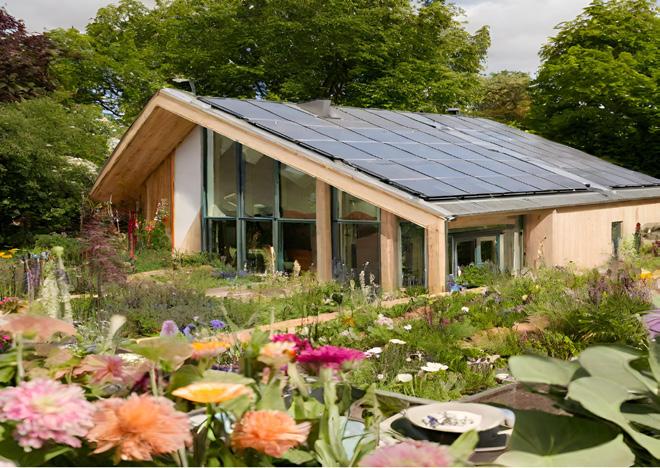
There are several sustainable gardens in Dayton, Ohio. The Five Rivers Metroparks are a great way to get outside and enjoy nature. One of their parks, Wegerzyn Metropark, includes interactive gardens and hiking trails to help connect with and appreciate the environment. Those interested in adapting their lawn to make it more sustainable can get design ideas and learn the best types of plants to go in their yard. There are many people around the world working to make sustainable gardens to help the planet we live on. Through hard work and dedication, anyone can help.

PSAVING OUR PLANTS FROM CLIMATE CHANGE
lants are being affected by climate change. Plants in gardens around the world can adapt to many kinds of weather conditions, but they need a little extra protection from the elements. Putting in a little extra work during extreme weather changes can keep gardens flourishing.
There are many types of weather that can affect a plant’s ability to grow. Some of the main contributors to this issue are heat/ drought, freeze/snow, and high winds. But the solutions to these weather issues are amazingly easy to implement into any garden.
What are the best wind-breaker plants?
* Willow
* Common Hornbeam
* Holly
* Laurel
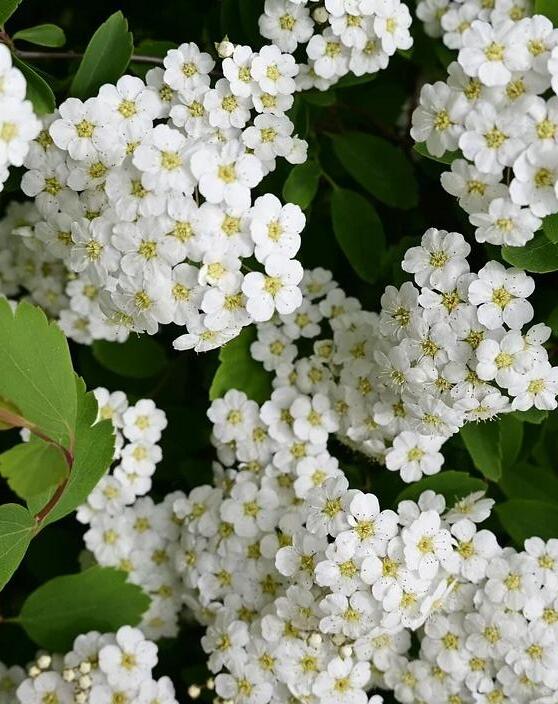
Firstly, let us discuss the biggest issues plants can face with the threat of global warming, heat, and drought. This is such a big issue because it can dry plants out and wither them. “Rather than a surface watering, go for a longer soaking, so that the water seeps into the soil and stays around longer,” state gardening journalists Sally Morgan and Kim Stoddart, writers of the book The Climate Change Garden. They go on to suggest “Less day-to-day watering.” While doing this may seem counter-intuitive, it will give your plants time to soak in as much water as they can.
Another big issue is the cold and overnight freezes. Plants can get very damaged by the frost and snow, but the solution is simple. Moving small potted plants indoors can help a lot “to prevent cracking or splitting when the cold weather strikes,” says Morgan and Stoddart. Larger plants rooted into the ground obviously cannot come inside. Morgan and Stoddart state, “Its best to carefully brush them [Plants] off to avoid damage.” After snowstorms and frost hit, keeping plants clean from snow and frost can help keep them light. Too much snow can weigh down leaves and branches, which is not good for the plant.
Wind is yet another threat plants can face. If winds are strong enough, they can uproot plants or pull off looser leaves and branches. “Plant trees or bushes as a windbreak,
rather than building a solid barrier,” suggest Morgan and Stoddart. Use stronger plants opposed to a solid barrier like a fence or wall. This is because walls can redirect the wind to minimize damage. Using strong plants is also a natural way to create these wind breakers.
Overall, these methods will help plants to stay alive during fluctuating temperatures. Keeping this in mind, there are also large-scale solutions to this issue. “A new UCLA-led study identified a range of characteristics from more than 100 types of plants that can be analyzed to determine each species’ preferred temperature and rainfall amount,” states Holly Ober, a writer for UCLA. This makes it easier to move plants to better, more suitable habitats.
This can help a lot in keeping as many plants alive as possible. People should do their part for the environment by planting some plants and protecting them from our ever-changing weather.
“People should do their part for the environment.”
POLLINATORS: THE WORLD’S SAVIORS
By Brody HaleyPollinators come in all sorts of different shapes and sizes, from being as big as a bird or as small as a bumble bee. Speaking of bees, did you know that they make 80% of all pollination?
Pollination is important because without it, there would not be much food because pollinators keep the plants growing and producing the food. The U.S. Forest Service states, “Little known fact, birds are also pollinators, and they play a very important role in wildflowers around the world.” Without pollinators, the world’s economy would be vastly different considering that “100 different kinds of crops in the US alone rely on pollinators,” says the USDA. Around the world, there are about 2.8 million beehives which hold 20,00080,000 bees each. If we go on
the low end, then that is 56 billion bees in the world, and that is just if we assume that there are only 20,000 bees per hive. “The hum of bees is the voice of the garden,” says Elizabeth Lawrence, from santabarbarahives.com.
Butterflies, beetles, and bats are also particularly important pollinators. Birds play a significant role in pollination because as Rosalie Wetzel states in her article “Bird Pollinators,” “As birds feed on nectar, pollen from the flower sticks to their bodies. When they move to another flower, some of the pollen rubs off onto the flower’s stigma, the part that receives pollen, allowing fertilization to occur.”
Another unknown fact is that small mammals are also pollinators, like bats, honey possums, and even lemurs. These mammals pollinate the same way all the other bugs do, by going near or on the flower/
Pollinator Word Search
plant, feeding off the nectar, getting pollen stuck to their fur or hairs, and then they drop off some pollen on the new plant.
So why do we say “pollinators” and not just “bees”? “Bees are vitally important pollinators, yet other insects, birds, and mammals also perform this service,” says the Smithsonian in their article “Pollinators + Plants.”
As you can see, pollinators are our world’s saviors, and we should be incredibly happy to have them around. If you see some outside in nature, say thank you. If you want to learn more about pollinator gardens or learn to make your own, there are many useful videos on YouTube.
“Pollinators
come in all sorts of different shapes and sizes.”
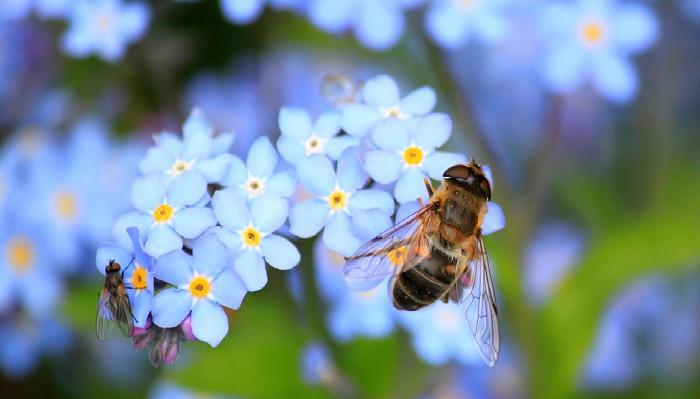
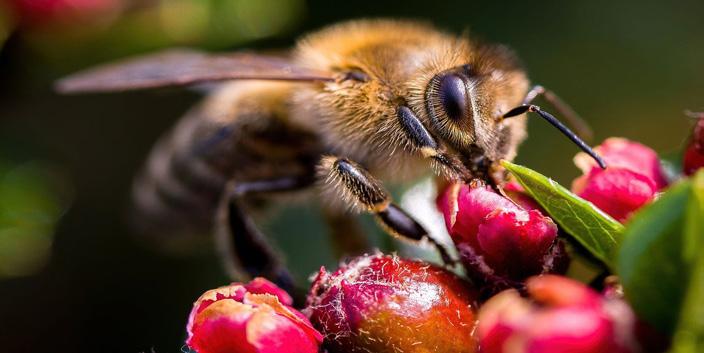
BUGGING THE GARDEN
By Addison GatlandNot all bugs are pests. Pests that people typically think of are aphids, locusts, and mosquitos. Those are all technically pests, yes, but there are other friendly bugs that get rid of them.
“A pest is likely to chew or suck plant roots, stems, leaves, flowers, fruits, or vegetables, causing damage or destruction, or spreading disease,” says Gardenerspath. com. They go on to say that, “Inchworms are greedy gluttons when it comes to delicious plant foliage. Young crickets chomp on the tender grass of lawns in spring, and grasshoppers can destroy a field of corn like a Biblical plague.” Most people think of those bugs as good and harmless, but those are all technically pests.
“Just making a garden can help.”
There are bugs that help too. Bugs

that most people do not think of or know about are the assassin bug, the praying mantis, and lady bug. These bugs all get rid of aphids, locusts, and mosquitos and sometimes all the above. The assassin bug, also known as the “wheel bug,” has a vicious nature, attacking a variety of pests with a deadly toxin. It eats anything from small ants to large caterpillars and comes in handy in case of infestation. The ladybug is quite common, but not a lot of people think it will help get rid of pests. While the ladybug is beautiful and is a symbol for good luck, it can be a killer too. The ladybug eats aphids, caterpillars, mealybugs, scale insects, and thrips. “In the larval stage, and as an adult, a ladybug consumes vast quantities of aphids. When aphids attack a plant, they can literally suck the life out of it, so inviting
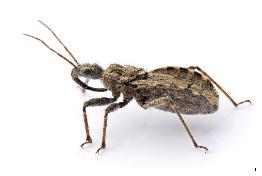
the ladies to a yard is a good idea,” according to Gardenerspath.com.
Mantodea, also known as the mantis, is helpful as well. Gardenerspath.com states, “It’s always a treat to find one of these interesting creatures in the yard, and even better to watch a nest of several hundred hatch.” It will get rid of aphids, beetles, caterpillars, crickets, flies, grasshoppers, leaf hoppers, locusts, moths, and spiders. Keeping these pests off plants will help a garden thrive.
Making a garden for these bugs is easy, the plants they like the most are dill, bergamot, cosmos, goldenrod, lemon balm, parsley, Queen Anne’s lace, statice yarrow, zinnias, and mint; planting flowers will attract as well. While it may be little, just making a garden can help a local ecosystem bring in a more diverse range of wildlife and wild plants.
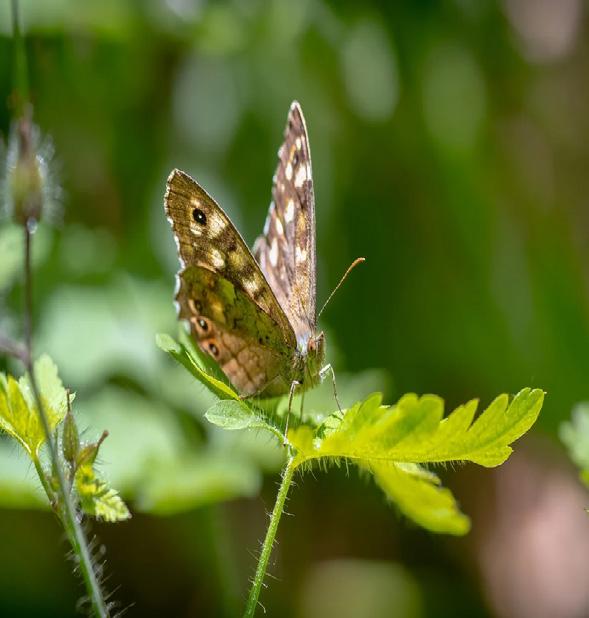
BIOPESTICIDES: CHANGING THE ENVIRONMENT FOR THE BETTER
By Emily LykinsPesticides are super harmful to lawns andgardens. A lot of the people may not know this and continue to use pesticides to get rid of pests and critters in their gardens. There is a safer alternative, and that is by using biopesticides.
Few people know about biopesticides. They are more eco-friendly for the growing plants and the living species on this Earth. As stated by Kimberly Stoner from the United States Environmental Protection Agency (EPA), “Biopesticides are certain types of pesticides derived from natural materials like animals, plants, bacteria, and certain minerals.” These factors are all super helpful when using biopesticides. The fact that they are made from natural materials like animals, plants, bacteria, and certain materials is already a substantial change compared to the harmful chemicals found in pesticides. Natural resources are being used and that is much healthier for the plants and the environment in general.
Biopesticides typically stick out more compared to regular pesticides because they don’t harm your plants. These biopesticides can be sourced from microbes. Microbes are tiny living things that are found all around us. Microbes are a much better idea than all the harmful chemicals found in pesticides, since they naturally occur in the environment. Biopesticides also decompose faster than normal, causing less problems for the environment. As mentioned in The National Library of Medicine, “Biopesticides are typically cheaper, environmentally friendly, and sustainable compared to normal pesticides which are very harmful.”
They are much healthier for the plant because they are specific in what their target is. However, biopesticides don’t work as long as pesticides do, so reapplying biopesticides more often is necessary.
Few people know about biopesticides, due to the fact that they may be uneducated on the harmful effects of using regular pesticides. According to Grow Green, a book written by Jen Chillingsworth, “making natural and safe pesticides is super simple to do for your plants. These natural pesticides are non-toxic and work on most pests and diseases.” There are many ways to make safe pesticides for plants like castile soap, essential oils, baking soda, and even chives and flowers. Before using these pesticides, however, the plants should always be watered 48 hours (about 2 days) beforehand. There are other ways mentioned in Grow Green such as hanging strip-soaked peppermint essential oils; birds, which are great for eating little pests; and using netting are all great ways to keep pests away from healthy, growing plants.
Biopesticides are here to save the day. These types of pesticides are the best way to create a happier, healthier garden where no plant or creature is affected in a harmful way. Some bugs and insects can even be pest controls, just like birds can.

CHEMICAL CATASTROPHE: THE DANGERS OF PESTICIDES
By Sarah PondEvery action has its consequence. This is the same for the environment and what we do to it. The invention of pesticides, such as DDT (dichlorodiphenyltrichloroethane), has negatively impacted the environment we live in and even caused health problems in humans.
DDT is a commonly used insecticide in agriculture that was banned from the United States in 1972 once its health effects were discovered, but countries outside of the U.S. still use it.
The body can be exposed to this chemical by touching, eating, or breathing products contaminated by the pesticide, which includes foods that farmers have used this chemical to grow.
indicator of past exposure.” By measuring blood serum in these participants, the CDC found that levels of DDT and DDE are still in our bodies.
Glyphosate is yet another insecticide that scientists have argued about for years. Unlike DDT, it has been registered as a pesticide in the United States since 1974 but has not yet been banned. The decision of whether glyphosate is safe is still being globally discussed, but many areas besides the U.S. have already banned it, such as in Latin America and Asia. For years, there have been debates across the world that this weedkiller is cancer-causing, and partially responsible for environmental damage.
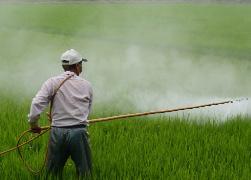
“Following exposure to high doses, human symptoms can include vomiting, tremors or shakiness, and seizures,” says the Center for Disease Control and Prevention (CDC) on their online biomonitoring factsheet, “laboratory animal studies show DDT exposure can affect the liver and reproduction.”
Although it is banned from the United States, studies show that DDT has left a scar on us and the environment. The CDC’s National Health and Nutrition Examination Survey (NHANES) measured DDT exposure in 1,956 participants aged 12 and older during 2003 and 2004. “By measuring DDT and DDE [dichlorodiphenyldichloroethene] in the (blood) serum, scientists can estimate the amounts of these chemicals entering people’s bodies.” CDC.gov states, “a small portion of the population had measurable DDT. Most of the population had detectable DDE. DDE stays in the body longer than DDT and is an
Pesticides may seem very appealing, since they control weeds and pests, but the truth instead reveals a counterproductive agricultural invention. Consumption of a food product sprayed with pesticides can be detrimental to consumer health. Pesticide use on crops and plants can affect the symbiotic relationship that plants have with their soil, and the chemicals can remain in animal tissue for an extended period. This chemical has proven that it can harm the health of every living creature, plants and animals alike.
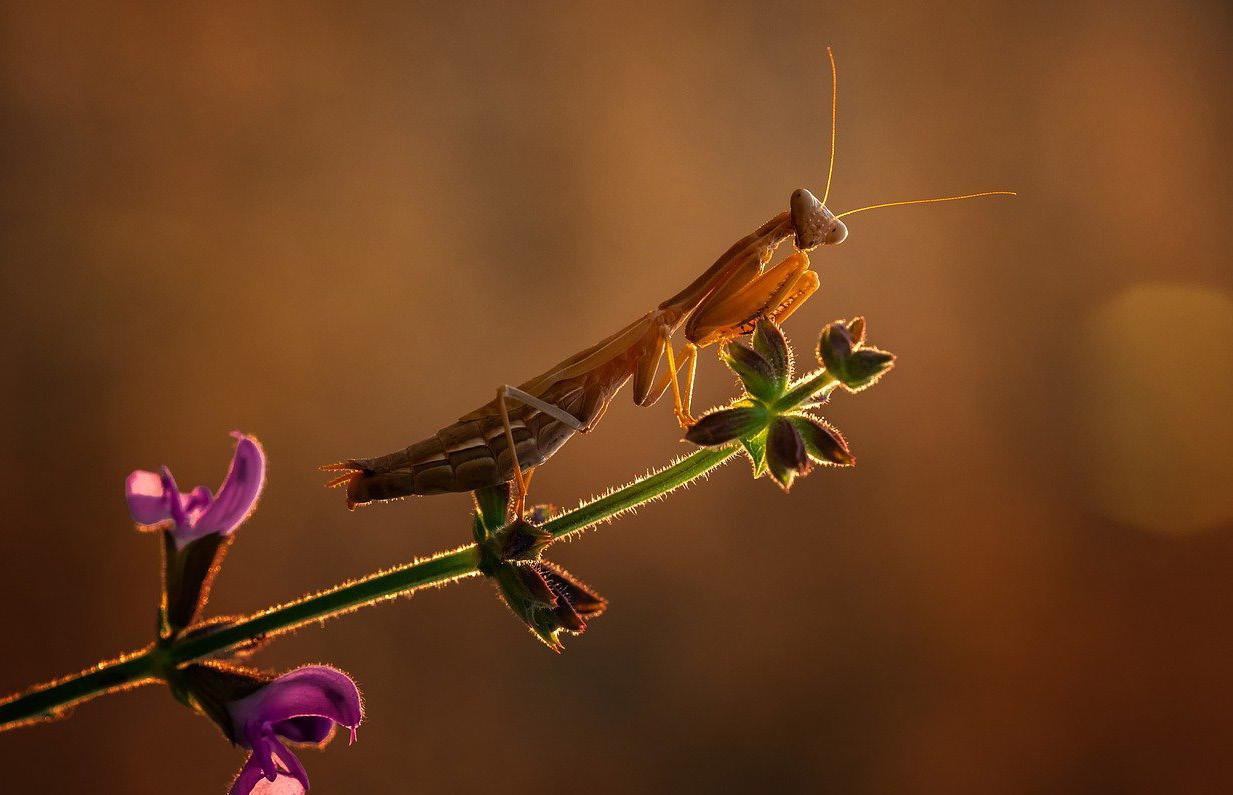
NATIVE PLANTS: WHY SHOULD WE USE THEM?
By Samia WeinerEveryone loves pretty plants, but most of the popular flowers and plants in people’s gardens are not native to Ohio or even North America. Now, this might not seem like that big of a deal to any person, but it’s a huge deal for a lot of the bugs living out in those spaces.
While pollinators, such as butterflies, are crucial to the environment, they all start at the same place: caterpillars.
According to Nancy Linz in her article “Why are Native Plants Important?” from ohionativeplantmonth.org, “Caterpillars have not evolved quickly enough to be able to eat these strange, exotic foods.” This means that while caterpillars can eat those flowers and plants, they shouldn’t and should instead be eating the plants native to their home. While this may not seem important, much like butterflies, caterpillars help a lot when it comes to the ecosystem, such as by breaking down nutrients and helping to give richer soil to the environment.
Native plants also have plenty of other benefits beyond just helping caterpillars and the ecosystem, such as helping to attract more pollinators to homes and gardens. While every garden needs pollination to thrive and grow, there’s more importance behind the need for these critters. Getting more birds, bees, and bugs around the garden to carry the pollen can help the environment in general by spreading the seeds of these plants to other areas. While nurturing the environment, native plants can also be quite beautiful. With multiple shapes and colors to choose from, these plants have a different look for every season. “It is easy to have a beautiful garden and benefit the ecosystem at the same time,” said Master Gardener Pamela Hubbard in the extension.psu.edu article “Why Use Native Plants?” Not only are these plants beautiful and good for the ecosystem, but they are also very low maintenance. All the plants need to thrive are their preferred amounts of sun, shade, soil, and water; other than that, they don’t need much attention.
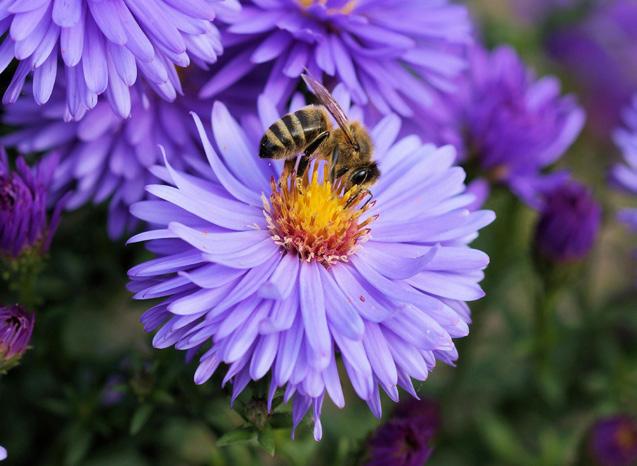
If one is looking to purchase a native plant in Dayton, Ohio, but doesn’t know where to start, there are multiple ways to go about it, such as checking plant nurseries or going to a local plant shop and looking at what’s in stock. One popular place that grows and sells native plants in Dayton is Scarff’s Nursery in New Carlisle.
Native plants offer so many ecological benefits, all while being beautiful and affordable. Even if a native plant is never purchased, it doesn’t hurt to investigate what can be done to help benefit any home or garden.
“...it doesn’t hurt to investigate what can be done to help benefit any home or garden.”
DIETS: THE SUSTAINABLE WAY
By Lucas OwensSustainable diets help to make the world a better living environment now and for the future. Having a sustainable diet is when people eat primarily locally sourced and grown foods.
Many food sources are non-local, which causes carbon emission due to how many forms of transportation each food product goes through. Imported foods also ends up in food waste on the trips because of how long the delivery process takes.
According to the site Food Engineering, “7-15% of food waste happens during transportation.” Also, when people buy imported foods, it is ridiculously hard to know exactly where it comes from and whether the food is natural.
There are many options for sustainable food types that anyone can add to their daily diet. Some of the most sustainable foods according to “Nutritics,” are mushrooms, pulses (dry grains), mussels, seaweed, grains, organic vegetables, and organic fruits. Each one of these foods can be grown and offer many health benefits.
Eating any of these foods is a small and straightforward way to help the environment by lowering carbon emissions and reducing use of fossil fuels.
It also builds healthy soil from growing food which then leads to better planting, less erosion, and saving money on inputs.
Eating and buying locally sourced food options increase community connectiveness and helps local family farmers instead of big businesses. Growing plants for food options helps to increase biodiversity in communities. Biodiversity means a variety of natural plants in a certain area. It is especially important to expand biodiversity because according to The Royal Society “Biodiversity is essential for the processes that support all life on Earth, including humans.”
Even though there are many local sources of food in the Dayton area, they go unnoticed due to the fact that big businesses have more promotional materials. This convinces consumers they are the only options.
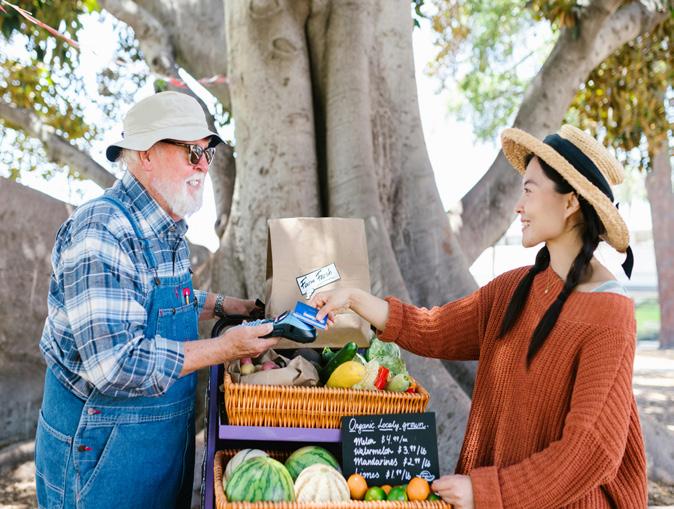
Well, here are some of these unnoticed locally sourced produce stores: 2nd Street Market at 600 E 2nd St, Dayton, OH 45402; Dorothy Lane Market at 2710 Far Hills Ave, Dayton, OH 45419; Gem City Market at 324 Salem Ave, Dayton, OH 45406; and Whole Foods at 1050 MiamisburgCenterville Rd, Dayton, OH 45458. Other sources for locally produced food are farmers’ markets. They are quite common in many towns and are always full of fresh food sold at affordable prices.
A little fun fact is that most of the world’s oxygen comes from seaweed and other microscopic algae. Seaweed can be grown as a part of sustainable diets.
“Sustainable diets help to make the world a better living environment now and for the future.“
Sustainable diets are particularly important if anyone wants to make the world a better place for current generations and future generations. Whether people grow their own food or buy it from local farmers, they will be helping the environment in a simple yet powerful way.

Waste & Recycling
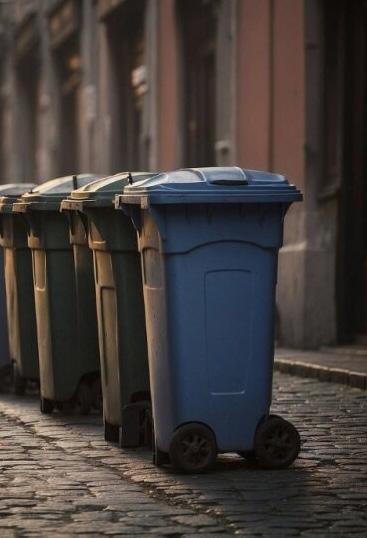
THE IMPACT OF PLASTIC ON THE ENVIRONMENT
By Faith BrownIt takes more than 1,000 years for plastic to decompose. As we continue to pollute the Earth with plastic, the consequences that come with it are more severe than it might seem.
The impact of plastic on the environment and humans might seem insignificant to those who do not see the effects of it, but according to Caltech (Californian Institute of
“It takes more than 1,000 years for plastic to decompose.”
Technology)’s website, “The production and disposal of plastic generates greenhouse gases and hazardous waste. Plastic and the chemicals it emits are building up on land and in oceans, lakes, rivers, ice, and air, and the resulting damage to human and ecological health is currently poorly understood.” Plastic pollution plays a crucial role in negatively affecting the environment, and unfortunately, not many people are informed of these things so not much is being done. What is known, however, is what can be done to prevent plastic from
Dear Reader:
By H. C. Aruining the world. Plastic also has harmful effects on our bodies, not just the world. It has been discovered that many human beings have been found with traces of plastic in their organs and blood. It even affects the placenta, an organ in charge of nourishing and maintaining the fetus through the ambilocal chord.
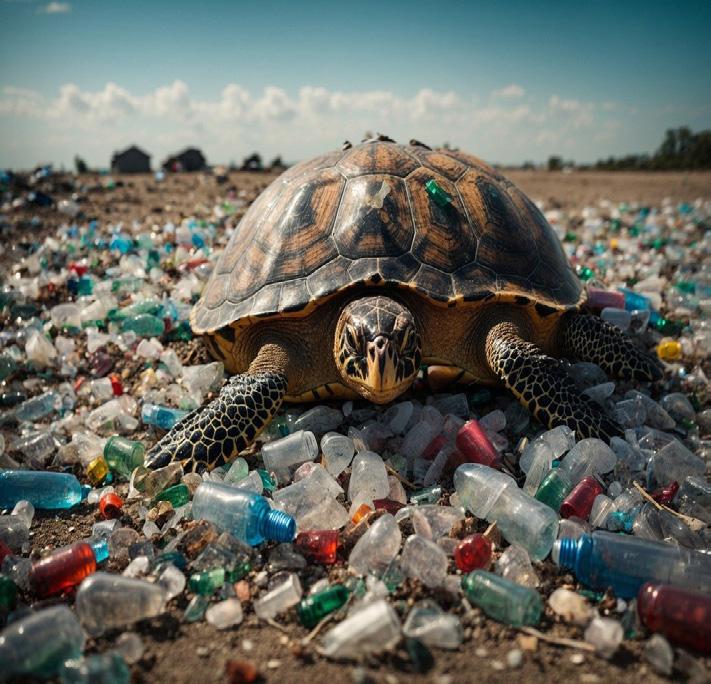
This is a major issue that needs to be fixed or at least reduced as soon as possible because few people know how plastic is negatively affecting them. “What is known is that the average human consumes and inhales up to 121,000 plastic particles every year—a number that increases with bottled water consumption,” states Liz Switzer in her article “It’s Time To Talk About Plastic Pollution and Its Impacts on Human Health.” Even bottled drinking water has been affected by plastic. Not much is known about how the chemicals in plastic get into the water, but it is not easy to get rid of once it enters the body. Switching to more sustainable options like stainless steel water bottles can save our bodies from being corrupted by plastic. Many people do not realize how much plastic they consume and why they should do something about it.
One person can help reduce the use of plastic. Some ways to do that include using a reusable water bottle, shopping with a reusable bag, and shopping at bulk food stores. If just one person could participate in an activity like an Earth Day clean up event, which is simply picking up trash around the area, the Earth could be saved. While picking up trash might sound like a chore, the option to invite friends and family along to make the task more fun is always open. It might not seem like much, but know that it only takes a couple of people to help the environment. The more time is wasted, the less time there is to fix the problem, so encourage others to help fight the war against plastic and its negative effects on the environment.
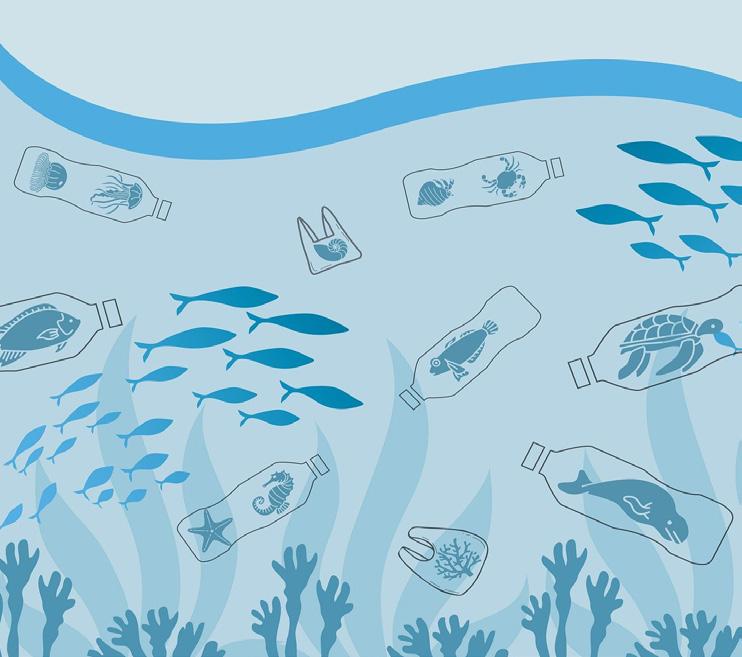
Sustainability is an especially important part of our society for our future generations to live a long, healthy life. Sustainability has affected my life in a very imperative way. It has become a part of my life and helped me understand how important it is to have a sustainable environment. A sustainable environment is needed to do a lot of things, but some of them are to preserve our planet, conserve natural resources, and reduce pollution.
THE WAYS TO RECYCLE
Recycling is the process of collecting and repurposing materials that would otherwise be thrown away as trash. By recycling things like paper, cardboard, and plastic, people can turn them into something else. There are several ways to reduce municipal solid waste (trash) to make the environment a better and healthier place. According to the Environmental Protection
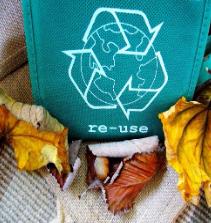
Agency, a website that talks about recyclable items, “Paper makes up 23% of municipal solid waste generated each year which is more than any other material.”
One way to recycle would be to use a reusable bottle or cup to avoid expensive one-time-use containers, which beverages often come in. Most cans and bottles can be recycled, although they need a lot of energy to be produced, shipped, and stored for purchase.
A second way to recycle would be to purchase wisely. The amount of waste a person produces can be reduced. They can try to purchase
products that come in packaging which can be recycled, or products that come in less packaging. Composting is another process akin to recycling in benefits. Nature Conservancy, which is a website that talks about ways to reduce waste, raises the the question, “Did you know as much as 25% of the items in your trash could potentially be removal from the waste stream and composted in your back yard?” Some examples of compostable items are fruit or vegetable scraps, eggshells, coffee grounds, grass clippings, and leaves.
Avoiding single-use food or drink containers and utensils is also
“Paper makes up 23% of municipal solid waste (trash) generated each year which is more than any other material.”
great for sustainability. They are a waste of plastic and not healthy for the environment because they cannot be reused. Since a lot of these products are made from plastic, they will not degrade in a landfill.
Consider buying second-hand items and donating used goods. When buying products, consider buying them used, as it will save money and the planet. This supports charities who sell second-hand items, and a lot of
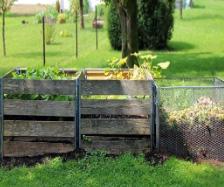
products will be saved from going into the landfill or the dump.
Another approach to recycle would be to shop at local farmers markets and buy in bulk to reduce packaging. By shopping at a local farmers market, consumers can purchase fresher items than at a regular grocery store; they will also be supporting the market and its vendors. Using more local products is important because it makes a big difference to the economy too. Nature Conservancy, states that by “Buying second-hand clothes at Goodwill, used furniture and repurposed construction materials at Habitat for Humanity’s ReStore, or searching Craigslist for a deal on a bicycle,” consumers could find good second-hand products and give them a second life.
Did you know...?
George Washington was a composter. The building he devoted to composting was called a dung repository.
DOWN THE DRAIN: WATER WASTE AND USAGE
By Isabella SernaWater usage and waste in Ameica are two things we need to focus on. Water usage is how much water people are using when they run their faucets or water their garden. However, water waste is how much water that is being polluted, or is being used, and just ends up going down the drain or evaporating. Water that isn’t treated is becoming a rising issue in cities all around the world and making people very sick.
The growing population of people in the world only means a continuously rising water demand,
“The average family can save 13,000 gallons of water and $130 in water costs per year by replacing all old, inefficient toilets in their home.”
which makes it harder to make sure everyone has clean, and safe drinking water. When we look at the data, it becomes clear that Americans waste more water than they’re clearly aware of. The average family in America wastes up to 180 gallons of water per week. That’s equivalent to about 10 minutes of shower water running non-stop. But how? Leaving faucets running while showering, shaving, brushing teeth, and washing your hands is the main culprit of this. But also, any household leaks often waste lots of water too. According to epa.gov, “The average family
can save 13,000 gallons of water and $130 in water costs per year by replacing all old, inefficient toilets in their home.” When it comes to outdoor water use, 50% of the water that is used is wasted. People go outside, and water their lawn or garden and get distracted by whatever is happening around them and waste more water than is necessary and needed. It either evaporates or the wind catches it, and it moves
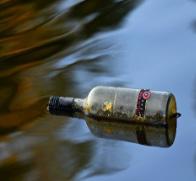
somewhere else. Spring and summer are when the most water is wasted. People go outside, get hot and sweaty, participate in their sports or outside activities, then convince themselves they need a nice, long, hot shower to end their day, when they do not.
In her article, “Home Water Use in the United States,” Sarah Blount says, “The majority of the water withdrawn for the public supply comes from surface water sources, such as lakes or streams, while most self-supplied domestic water use comes from groundwater sources.” The world’s oceans, which make up 97% of the world’s water supply, are polluted with plastic and other dangerous materials that can be very harmful if ingested. Mentioned
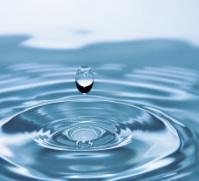
previously, it is becoming increasingly difficult to make sure everyone has clean and safe water to use. When people waste water, they’re only adding to this struggle. It would be smarter for individuals to turn off the faucet while nothing is touching the running water, or setting a ten-minute time limit in the shower.
There are many ways for people to limit the amount of water that they use, but people just need to be determined to do it. As water is one of the most important elements on Earth, it is important to not waste it. If only people knew how much water they were wasting, and the potential effects it could have on them and future generations, maybe water waste could be minimized.
Did you know...?
If we continue at current rates, the amount of plastic going into the ocean (10 million tons annually) could triple by 2040.
LANDFILLS: HERO OR VILLAIN?
By R.S.Landfills are not the villains and destroyers of the environment that people tend to think they are and here is why.
Landfills are not as bad a method of storing trash as people believe. They stay out of sight and can hold vast quantities of trash without severely damaging the surrounding environment. So, how exactly does a landfill work? The idea is simple. Dig a large hole, line it so nothing
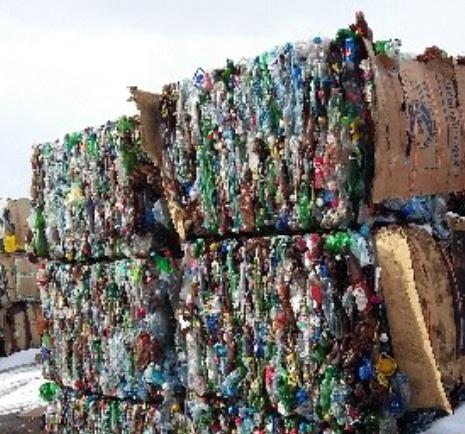
leaks out, dump trash in it, compact said trash, and then cover it up.
Unfortunately, landfills have two major issues. They produce landfill gas, which is a combination of carbon dioxide and methane, and leachate. Leachate is water that collects at the bottom of landfills and after running through all the garbage in the landfill, turns into a very toxic and corrosive substance and can damage the lining of the
landfill. From 1970-1980, this was a major problem as leachate began to contaminate groundwater, but that problem was fixed with an increase to the strength of the lining. Still, leachate must be pumped out of the landfill and cleaned, and that takes power. That power could be generated by using the landfill gas as fuel. “The methane in landfill gas contains about as much energy as low-grade coal but burns much more cleanly,” says Byron Reese and Scott Hoffman from their book, Wasted.
Reese and Hoffman also state that, “By turning landfill gas into energy, we… create value from what seems like pure waste. While landfills are no panacea [cure for all problems] … there are certainly worse things to do than to put… waste in well-constructed landfills.”
According to landfilltechnicaldata. gov, one of the smallest landfills in Ohio emitted almost 250 million pounds of landfill gas over the course of one year. If harnessed in its entirety, the landfill produced enough
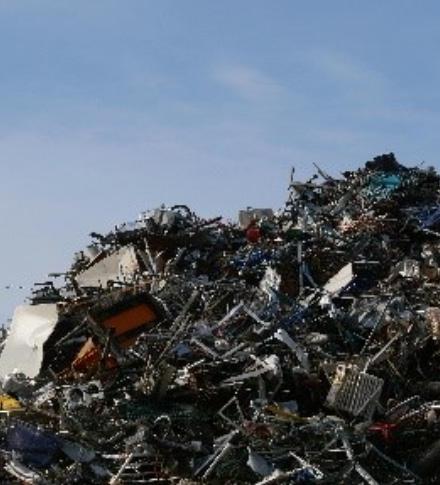
“Even though most zerowaste products are more expensive than their counterparts, they are usually higher quality and last longer.”
methane to generate over 250 million kilowatt hours of energy. For context, in 2023, the US used about 4.1 billion kilowatt hours of energy.
In addition, things like metal, glass, and plastic in landfills have far lower emissions than what it would take to recycle them, making landfilling a perfectly good solution to disposing of long-lasting materials.
The main problems come from things that decompose, as those make up most landfill gas emissions.
MY OPINION ON STRAWS AND WHY
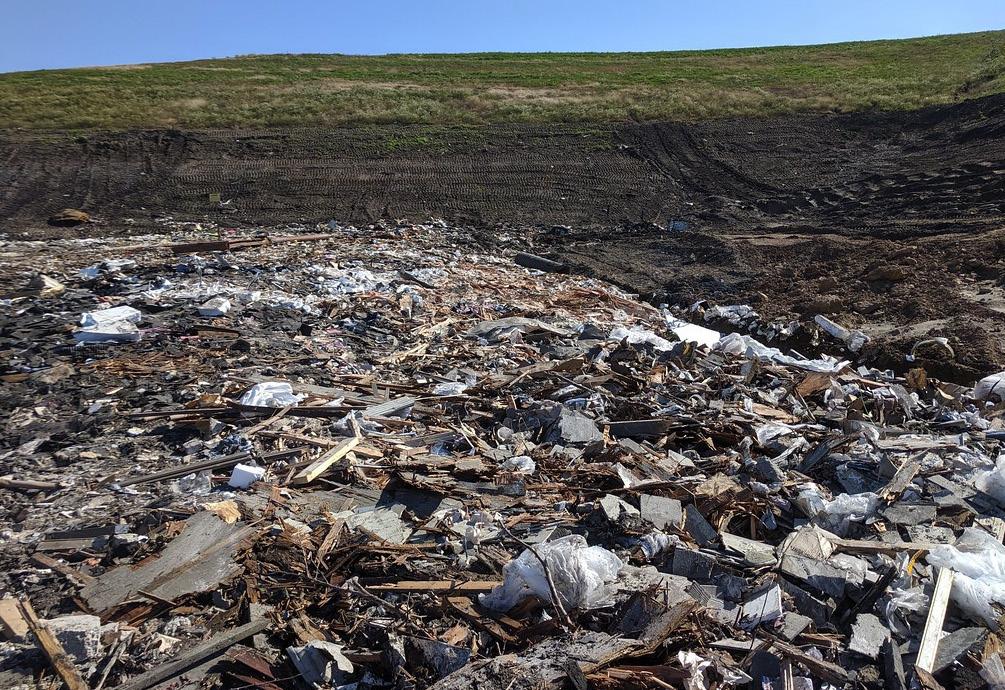 By R.S.
By R.S.
At the moment, there is an ongoing debate on the topic of paper versus plastic straws. The entire debate is about the pros and cons of both, and which one you should use over the other. At the same time, another debate, straws or no straws continues. Straws have many downsides compared to their upsides, and that is why I prefer not to use straws.
Plastic straws, one of the more notorious straw types, are hard to recycle due to the plastic recycling machines struggling to take them, and when they are thrown away, they take centuries to a millennium to break down. While they are breaking down, they release harmful
chemicals, end up in oceans and sewage, and harm wildlife all over the world.
I remember a time when I went to a beach, and it was covered in an immense amount of plastic straws; I personally harbor a hatred for plastic straws.
Unfortunately, biodegradable straws made of bamboo and paper have issues as well. The straws break down more easily, causing more to be made, which leads to a direct increase in the quantity of trees being cut down.
In addition, just like with plastic, biodegradable straws contain harmful chemicals, and some are even internally lined with plastic to help keep them together. Paper straws start
to break down the moment they touch the drink they are being used in, and if colored in any way, they can seep harmful chemicals and dye into the drink. Bamboo straws have their own share of issues. The main one that comes to mind is the awful aftertaste that drinking from a bamboo straw leaves in your mouth. Having experienced this multiple times, it is awful.
For people with motor or swallowing disorders, straws can help them safely drink beverages which is the main upside of straws, but otherwise, drinking through a straw can cause people to develop lip wrinkles, bloating of the mouth, and teeth staining.
How Much Does the Average American Recycle Every Year?
By Isabella SernaZERO WASTE 101: ZERO-WASTE BENEFITS AND TIPS
By Jane McEllroyZero waste will benefit people and the environment significantly. It can be defined as reducing waste by recycling and recovering resources for use again.
“There is no such thing as ‘waste’ in Nature. …the by-product of one system is feedstock for another system….” This was stated by the County of Hawaii in the EPA’s article, “How Communities Have Defined Zero Waste”, which has many zero-waste definitions by other communities. Zero waste is a great way to help the environment, and it is relatively simple to do. Practicing zero waste has many benefits, such as having fewer toxic chemicals in homes. Most cleaning and self-care products have potentially damaging and toxic chemicals in them and their packaging. These toxins have been linked to many medical conditions and issues. If these products were removed from houses, it would be healthier for the environment and for people. Another benefit is reduced unnecessary spending. Most products are made cheaply and for single use. This encourages people to buy more and eventually waste more. Buying with zero waste in
mind causes people to think more about what they are buying, causing less impulse buying and less waste.
Even though most zero-waste products are more expensive than their counterparts, they are usually higher quality and last longer. In the long run, zero-waste products can save people money by not having to spend a lot on repeated repairs or purchases.
“To make the world a better place, others can do things to make their household or local area more sustainable, “
There are many easy ways to contribute to zero waste.
“Reducing waste may seem intimidating, but it doesn’t have to be,” says Meaghan Weeden from the organization ONETREEPLANTED in her article “How To Reduce Waste: 21 Ideas for Zero Waste Living.” Meaghan gives multiple eco-friendly solutions in her article, including buying in bulk. Bulk goods use fewer materials to package them and therefore, less materials are wasted.
It is good to invest in a set of cloth produce bags. They are easy to
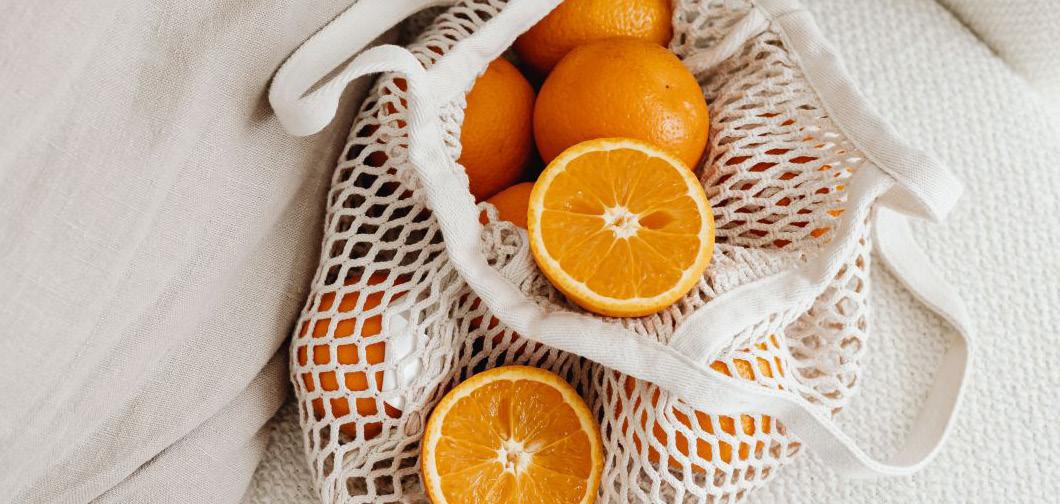
carry around, and can be used to store many different things, from food to clothes. Give ugly veggies and dented cans a chance. Many products are wasted just because they don’t look perfect. While these products are still perfectly fine to consume, they are just thrown away. At home, compost food scraps. Not only does it get rid of waste in a sustainable way, but it is also a great material for gardening. Finally, replace soap bottles with bars. Soap bars are more concentrated, so they last longer than soap bottles, which are made to be used up fast. Soap bars also don’t have all the plastic that comes with soap bottles, whether on the outside as packaging or on the inside as micro bead fillers
There are multiple businesses in the Dayton area that support zero waste. One example is the Reduce and Reuse Refillery. They refill bottles with home and body care products so that no plastic is wasted. Some grocery stores such as Aldi’s make people pay for bags to encourage them to bring their own. Many businesses try to do their part to reduce waste.
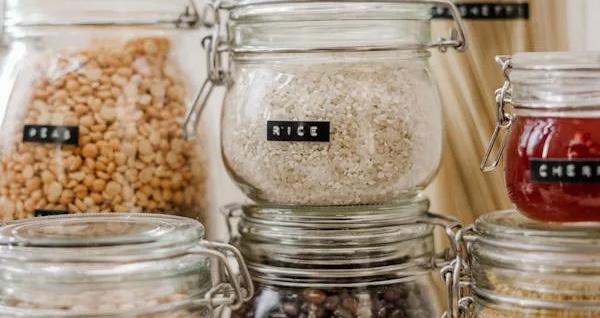
IN RECYCLING WE TRUST: YOUR GUIDE TO BEING SUSTAINABLY FASHIONABLE
By Phoebe MortensonWorldwide textile waste production shows no sign of slowing soon enough to prevent the Earth from becoming even sicker than it already is. Although, change could happen. Actions like thrifting and upcycling clothing make a real difference.
“The US generates just over 17 million tons of textile [waste] per year,” states Arabella Ruiz in her article “17 Most Worrying Textile Waste Statistics and Facts.”
Ruiz is a statistician and senior researcher at TheRoundup. This waste adds to landfills around the world, and high volumes of non-renewable resources are used in the manufacturing of clothes that are often thrown away soon after purchase. “Globally, the fashion industry is responsible for 10% of all greenhouse gas emissions… and the fashion industry is responsible for 20% of global wastewater,” said Addison Beall, a features correspondent for the British Broadcasting Corporation
(BBC), in her piece “Why Clothes Are So Hard to Recycle.”
Thrifting is one way shoppers can help slow down fashion and the decline of the environment’s well-being. By reducing the production of new clothing, the lifespan of existing clothing items are extended, and their carbon footprint from manufacturing is reduced.

Buying second-hand clothes also reduces the amount of raw materials consumed in making new garments.
Additionally, thrifting is available to almost all price ranges. Buyers can save money and have a good feeling about the fashion choices they make to preserve the planet and its limited resources.
In-person thrift stores are best
for those just getting into thrifting because shoppers can physically examine the entire garment. If the consumer already has some practice with thrifting, online thrift stores can save time while costing about the same as in-person.
According to the article, “A Sustainable Guide to Thrifting,” by University of Colorado Boulder environmental engineering student Lauren Muller and environmental studies student Kate Huun, “Thrifting isn’t the only way to keep unwanted clothing out of landfills… Repair and repurpose: If you have clothing that isn’t in good condition, consider making repairs or reusing the item for a different purpose.”
Upcycling is reusing discarded or unwanted items to create a product of higher quality or value than the original product. A practice even more budget-friendly than thrifting, upcycling also reduces textile waste and the carbon footprints of clothes from manufacturing.
Examples of upcycling projects include making a pair of jeans into shorts, transforming T-shirts into tote bags, making an old T-shirt into a pillowcase, and turning an ill-fitting pair of shorts
into a skirt.
In Recycling We Trust: Your Guide to Being Sustainably Fashionable Continued....
Otherwise, buying upcycled clothing from others is a great way to be sustainable while supporting local businesses and artists.
Local in-person thrift stores include Goodwill, Once Upon a Child for younger children, Plato’s Closet for older children, and Clothes Mentor for adults.
Poshmark and ThreadUp are great online options with many different price points.
Online guides with upcycling tips and websites like Pinterest and Instagram are great places to look for those who want to get started with upcycling, and for those looking for inspiration for their next project.
The Potentiomenter
A device created in Computer Science Class
BY LINCOLN ANDERSONHave you ever wondered how much water you use in your sink every day? Do you want to save money on your water bill? Maybe you just want to be sustainable to the environment to help save the world? If you said “yes” to any of these questions, then you should try a “Water Output Measurer.” It uses a potentiometer connected to Arduino Uno, connected to a Raspberry Pi, and that information is saved on our website. Connect the potentiometer into a sink’s faucet handles, and it will measure how much water you’re consuming.
“The
Water Output Measurer” Try it today!
Warning: Do not get the wires or Arduino wet, as it will damage it - possibly beyond repair - and could cause injury.
THE THREE PILLARS OF SUSTAINABILITY
By Nathan LySustainability is meeting the needs of the present without compromising the ability of future generations to meet their needs. It is supported by three core pillars, which are environment, society, and economics.
Sustainability can only be achieved when these three pillars work together in harmony. “A hierarchy, where the economy is contained in the society and the society is itself contained inside the environment.” says sustainable living engineer, Simone Nulli Rinalducci.
Environmental sustainability symbolizes the importance of things like biodiversity and natural resources to support life on Earth. These solutions involve environmental science to minimize the negative impact that humans have on nature. Environmental sustainability ties closely to social and economic sustainability. If we do not take care of the environment, it will be detrimental to public health. The cost of resources will rise, and finite resources for economic manufacturing will begin
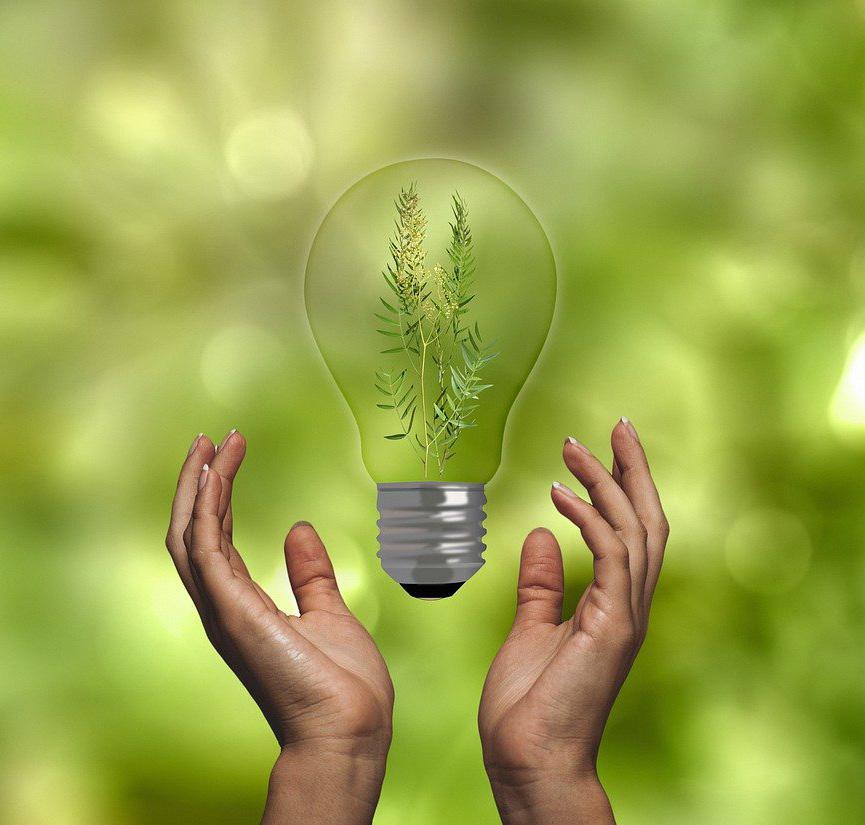
running out. As a community, we can start being environmentally sustainable by recycling, using renewable energy, and saving water. “Social sustainability includes environmental justice, human health, resource security, and education,” Liz Allen, a writer stated on the sustainability site TreeHugger. Social sustainability affects mainly humans, and their well-being. Social sustainability is important, as there will be no impactful change unless humans genuinely make a collective effort and act. Social sustainability also relies on environmental and economic sustainability. If we decide on inaction, then the environment will suffer because of ignorance. If we are not socially peaceful and stable, the economy will suffer due to anger and mistrust. Our community can support this pillar by reducing poverty, and promoting diversity, social justice, local culture, and quality of life.
According to Indeed, a career development website, “Economic sustainability is the practice of conserving natural and financial resources to create long-term financial stability.” Economic sustainability is important for the longevity of the global economy and the preservation of human life. If sustainability takes away from the global economy, we will be hurting while helping ourselves. Some solutions to help with economic sustainability are devising less wasteful systems that still help the economy grow and prioritizing low-impact economic development. Economic sustainability relates to social sustainability, as they both play a part in healthcare, and promote inclusive growth.
Economic sustainability connects to environmental sustainability, in that,if the economy’s services and products are not
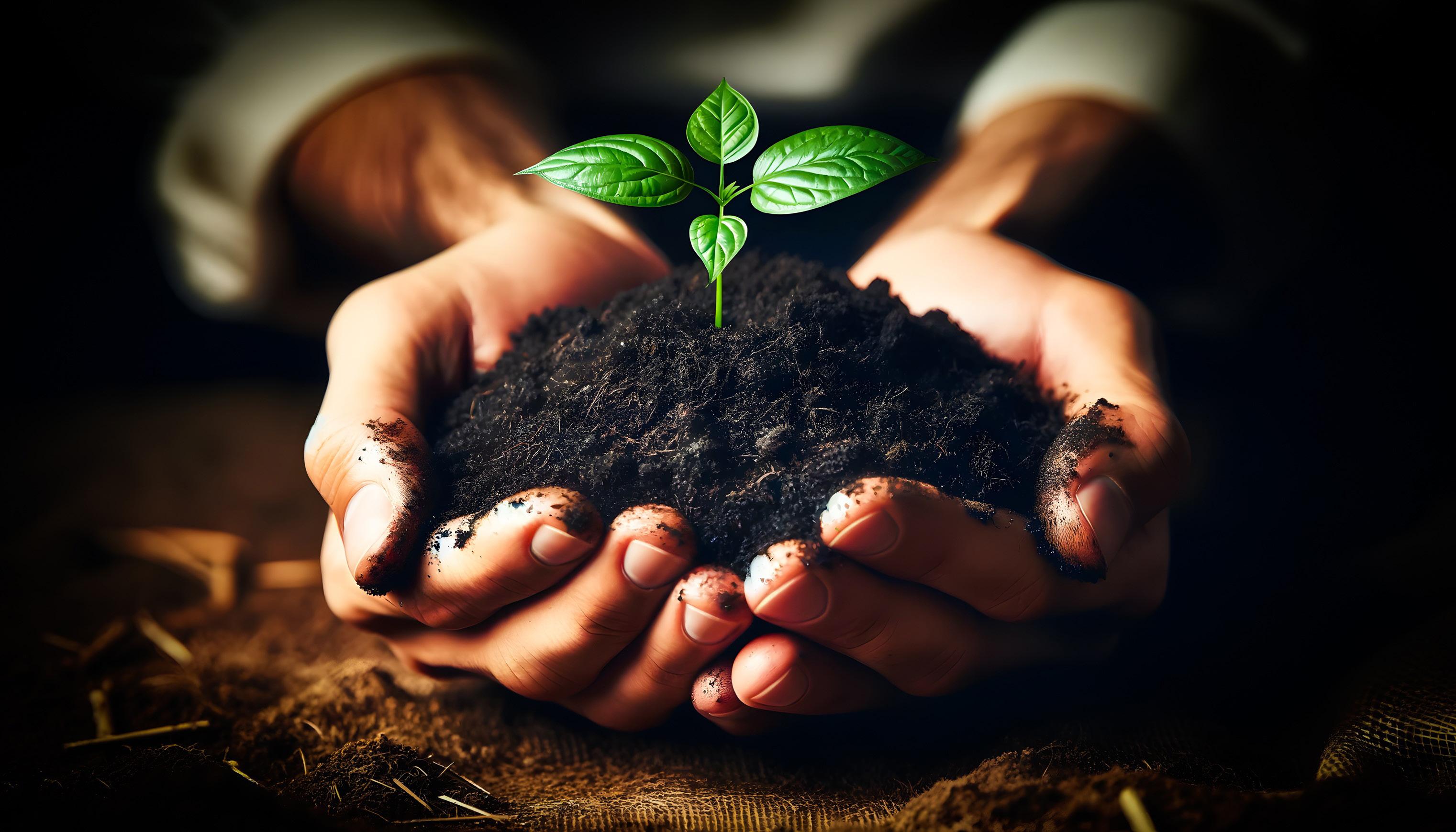
sustainable, the environment will have to suffer as a result. Our community can be economically sustainable through resource efficiency and supporting local businesses.
The three pillars of sustainability are vital for our survival and are becoming more well-known and widespread as time goes on. These pillars are important, as they provide us with a basic outline of what sustainability truly is. If we do not support one pillar, then the rest will fall. Everyone plays a part in keeping the three pillars of sustainability supported, no matter how big or small the effort. If we all support these three pillars, it will lead us to a bright, happy, sustainable future.
“The three pilliars of sustainability are vital for our survival...”Copyright-free image retrieved from pixabay.com
SUSTAINABLE HOMES
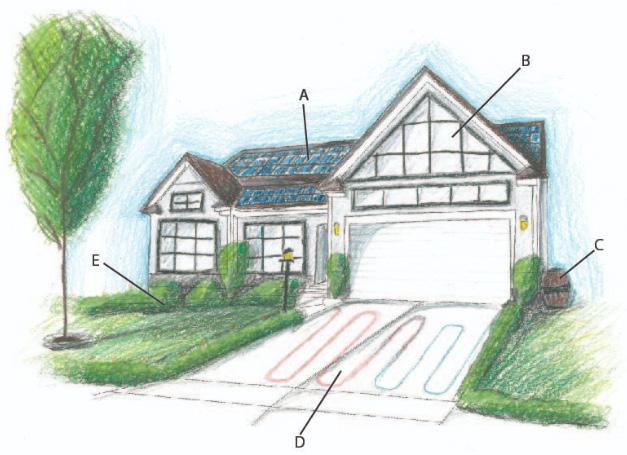
A. Solar Panels
Solar panels are large flat panels that convert sunlight into energy. It is a source of clean energy that doesn’t harm the environment.
B. Big Windows
Big windows let in lots of natural light. They help reduce electricity use because you don’t have to use as much electric light.
C. Rain Barrels
Rain barrels collect rainwater from your roof and gutters and store it for later use. By collecting rainwater, they help reduce clean water waste on yards.
D. Smaller Yard/Leaving Yard to Wild
You can make your yard smaller and waste less resources by turning over your yard to the wild. This helps not waste resources and also helps with biodiversity.
E. Geothermal Heating and Cooling
Geothermal systems use the temperature of the Earth to heat and cool homes. It’s an environmentally friendly solution that significantly reduces heating and cooling cost and wastes less fossil fuels.
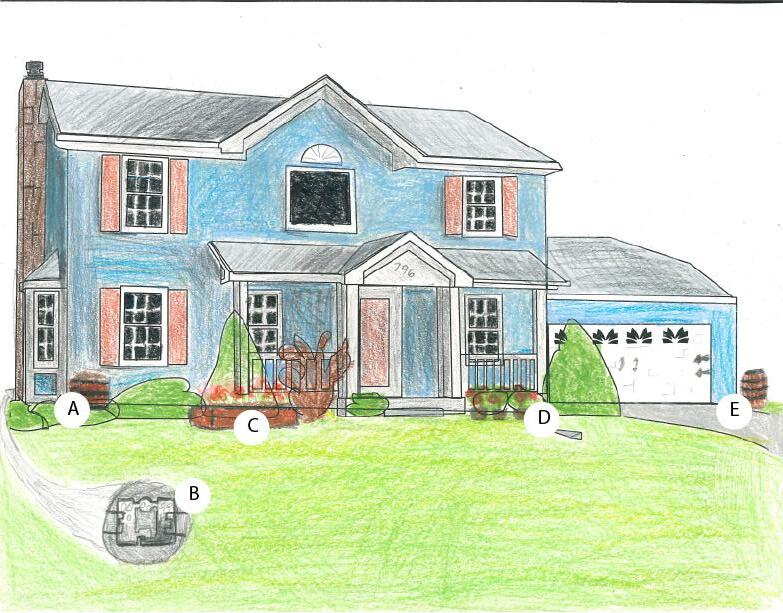
A. Composting Bins
Composting bins work to improve soil by safely getting rid of natural waste.
B. Geothermal Heating
Geothermal heating is a renewable energy source that is created from inside the Earth.
C. Flower beds
Flower beds increase biodiversity in your yard and attract pollinators.
D. Fruit plants
Fruit plants increase biodiversity and help you work towards a sustainable diet.
E. Rain barrels
Rain barrels collect falling rainwater which can be used on gardens and yards.

